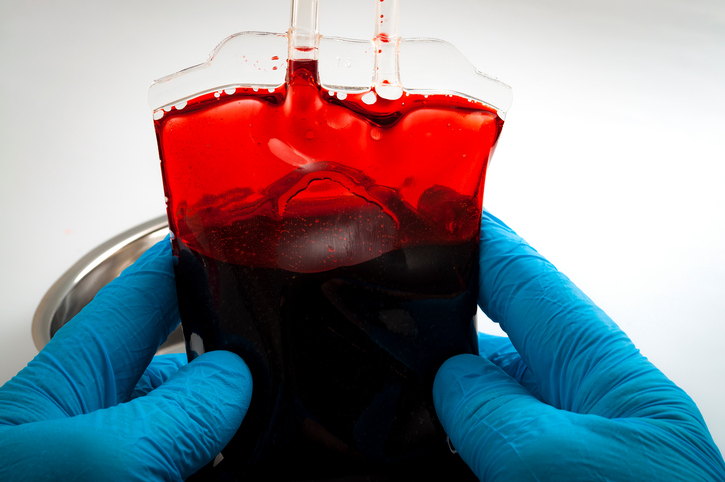Posted By: Stephanie Bouzounis, Senior Communications Specialist
The AIDS (Acquired Immunodeficiency Syndrome) crisis in the early 1980s had a profound effect on blood donations. The perception that the blood supply was safe changed in the mind of the public as well as the professionals. Concerns about donors and transmission of disease became a priority. In 1983, blood banking groups in the United States issued a warning about AIDS. Two years later, the Food and Drug Administration (FDA) licensed the first test to detect HIV. The American Red Cross shortly thereafter began testing all newly donated blood. By the early 1990s, it became protocol to test for HIV-1 and HIV-2 antibodies in donor blood. Part of the donor screening process at this time included reading a pamphlet about blood donations, being asked questions about high-risk behaviors, and questions about travel to malaria-prone countries.
In the book HIV And The Blood Supply: An Analysis Of Crisis Decision Making, there are several hypotheses about the motivations that paved the way for how the donor screening process was handled. One hypothesis was that there was a lack of consensus about the costs and benefits of implementing various donor screening procedures. Information in the 1980s about HIV/AIDS might have been sufficient for blood and plasma collectors to question donors about their behaviors, but not enough to formulate and implement policy. The lack of consensus about HIV transmission, the natural history of HIV related disease, and alternative modes of intervention was considered a big influence on decision making. A second major influence was the environmental factors at the time, which were political, ideological, organizational, and historical.
Nucleic acid amplification test (NAT) for HIV, and additionally, hepatitis was given the OK by the FDA in 2002. This is a molecular technique used for screening blood donations to reduce the risk of transfusion-related illnesses. This test was introduced in the late 1990s in developed countries. Germany, for instance, used this test in 1997 to detect hepatitis. In an article titled “Nucleic acid testing-benefits and constraints” published in 2014, NAT is described as highly sensitive and has reduced the window period of the hepatitis B virus (HBV) to 10.34 days, hepatitis C virus (HCV) to 1.34 days, and HIV to 2.93 days. Aside from the NAT test, there are also antigen/antibody tests and rapid tests. Rapid tests test for antibodies in the blood or oral fluid. Results of these tests are ready in 30 minutes or less and can be performed at a clinic or purchased and used in someone’s home. While this is the case, the CDC states that NAT tests detect HIV 10 to 33 days after exposure, antigen/antibody tests 18 to 45 days after exposure, and antibody tests 23 to 90 days after exposure. There currently is not a test that will detect early HIV infections.
In 2015, the FDA released a guidance titled “Revised Recommendations for Reducing the Risk of Human Immunodeficiency Virus Transmission by Blood and Blood Products”. According to this guidance, donors who are men who have had sexual contact with another man recently are asked to defer for 12 months. Additionally, those who have been treated for syphilis or gonorrhea or have a history of diagnosis of those STDS; and those who have had sexual contact with an individual who has ever tested positive for HIV, are deferred for 12 months. Part of the reasoning in this softening of donor guidelines can be attributed to the frequency and availability of NAT and rapid tests. The American Red Cross states that it is possible for HIV antibodies to take a few weeks to develop. As a result, if you were recently infected, a test may produce a negative result.
Have a question that we didn’t answer here? Call us at (248) 987-4497 or email info@emmainternational.com.
For further reading, check out this blog on our website:
Blood Donation: Advances in Diagnostics Point to Discriminatory Practices





